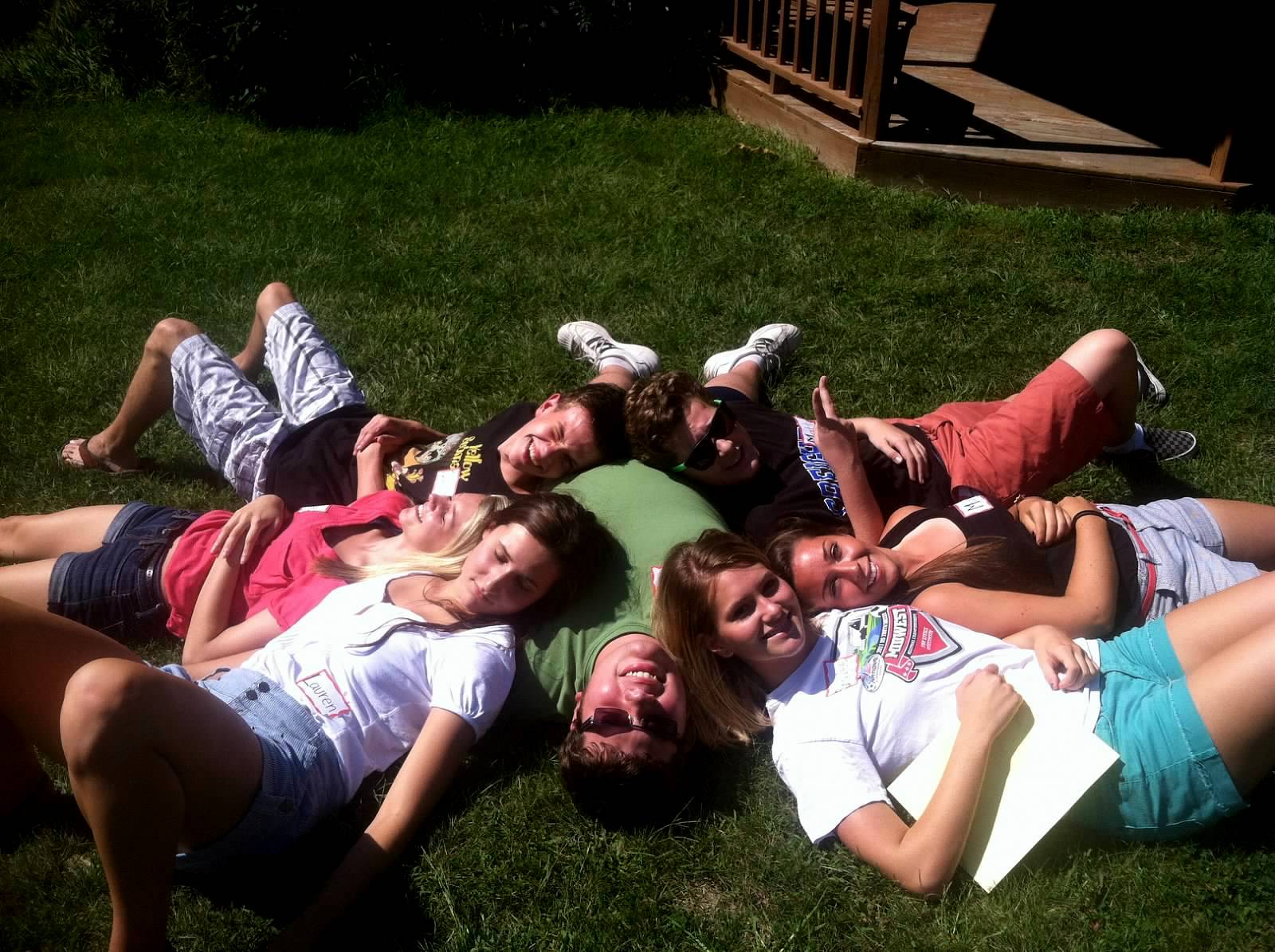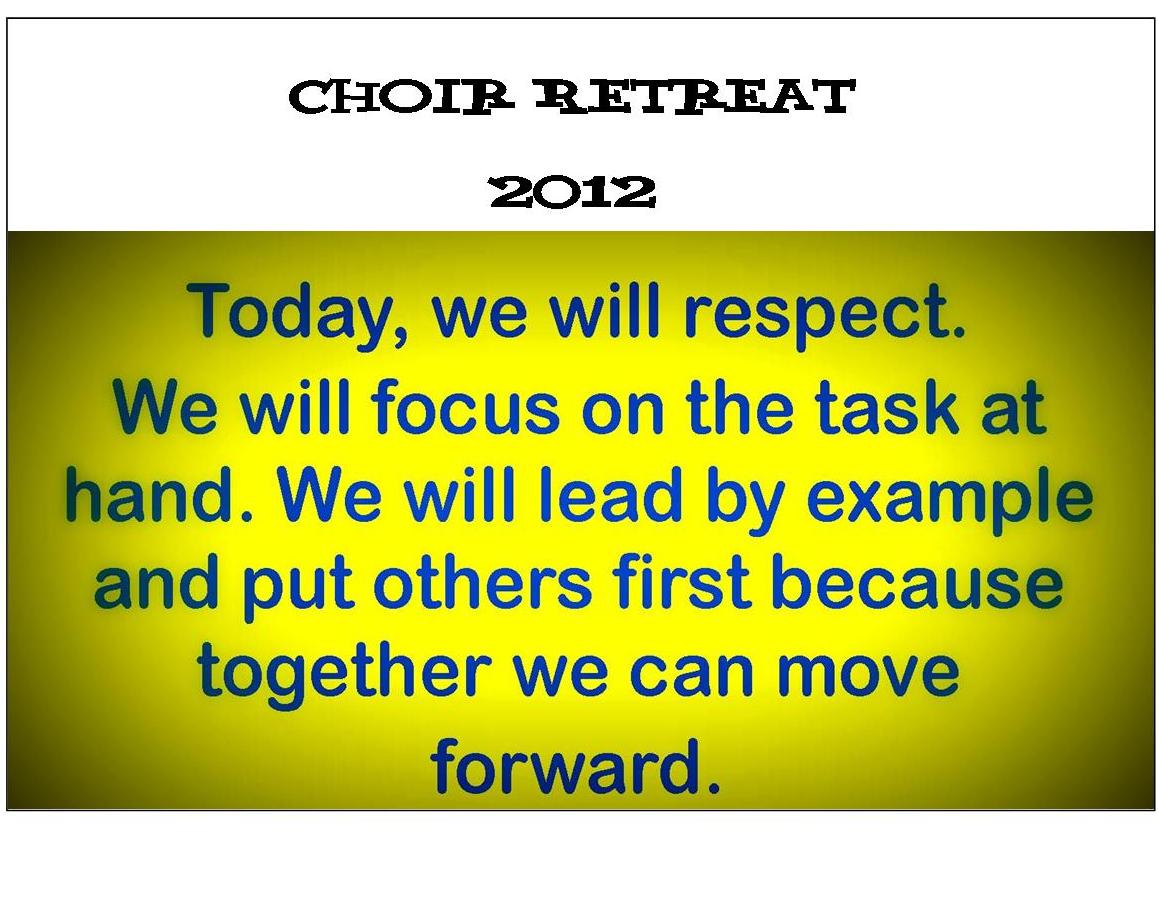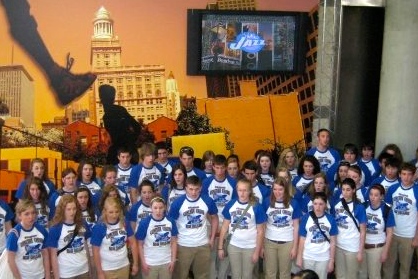- Importance and goals of a choir retreat;
- “How to” on planning your retreat;
- The different levels in building community:
- Level 1 – getting to know you
- Level 2 – in-depth discover exercise
- Level 3 – goal setting/commitment
4. An example of a Level 1 getting to know you activities;
5. A couple of ways to break large groups into small groups.
REMEMBER: The more your singers get to know each other and the importance of each person within the team or choir, the better they will become in trusting each other and you. It’s the basis for a positive and successful year as a choir.
I am backtracking a bit in this writing as I am including a Level 1 and Level 2 activity. These two activities can be used as separate or adjoining activities. The first activity can be used as short Level 1 activity. If you use the first activity sheet as a basis for the second activity, you can again use it as short Level 1 activity or if time is not a factor, can be used as a lead-in to Level 2.
Finding Common Bonds is the name of the first activity. I have uploaded the sheet as a PDF file.
You are welcome to print it off for your own use. Change or add any descriptions you wish. (I’ve also seen this done as a Common Bonds Bingo.)
Description: The singers move around the room with this sheet and find another singer who fits each description and gets his or her autograph. The goal is to find a different person for each description.
Goals: To discover each other’s similarities and differences.
Materials: A copy of the Finding Common Bonds sheet.
Activity: Direct the students to move around the room. To make sure the students move outside their group of friends, indicate that half the answers must be signed by the opposite sex. Make sure the singers understand that each person signing their sheet (or the sheets they sign) can only sign one time. The singers must go directly to each singer to ask the questions. They cannot shout out in the middle of the room, “Who hates chocolate?”
Wrap-up: When singers have completed their sheets, direct them to sit down. When all singers are seated, take turns having the singers read a question and whom they found matching that description. Then ask if anyone else found a different person who matched the description. Name those individuals and have them stand. If time permits, discuss the discovery process, i.e. which singers were similar; what person surprised them most and why?
Keeping in mind the questions on the Finding Common Bonds sheet, here is an activity called Talent Chairs.
Description: This simple exercise is a fun way for singers to discover gifts in each other without putting anybody on the spot. With an open time frame, it can be used as a short Level 1 activity or it can be used as a lead in to a Level 2 in-depth discovery exercise. In a fashion similar to Musical Chairs, singers discover talents and quality of others. The leader, who doesn’t have a chair, calls out a quality using a formatted statement such as a statement in Finding Common Bonds. All participants who possess this quality must get up from their chairs and find a different chair to sit in. The leader will find a chair to sit in during this exchange. Instead of losing their place in the group, the person who doesn’t get a chair becomes the next group leader and determines the next quality to be discovered. The list of starter descriptions is just a place for the leaders to begin. Encourage creativity and diversity of the leaders.
Goals: 1. To discover each other’s strengths and qualities
2. To identify similarities and differences among group members.
3. To foster inclusiveness through discovery of individual strengths and
those of the team as a whole.
Materials: Chairs for each singers; a list of starter descriptions, i.e. Finding Common Bonds.
Preparation: Clear the room and place enough chairs in a large circle for all the singers, less one chair. Determine who will be the first leader. Explain the activity and its goals to the singers. Read some sample statements to give some seed for thought. Encourage creativity and finding qualities that are unknown as to whether they apply to anybody in the group.
Activity: Have the first leader stand in the center of the circle while all the others are in the chairs. The leader begins a statement by saying “stand up and find another chair if you…” and finishes the statement with a description that may apply to the other participants. Everybody who possesses that attribute will stand and find another hair that is not immediately next to them, unless that is the only other chair available. The leader claims one of the empty chairs and the one singer will be left standing. This person is the new leader and repeats the process.
Important Director Guidelines: At first, singers may choose qualities that they are aware of in singers who are their friends. As the activity proceeds, it if become evident that certain members have not left their chairs, you may have to help the leader to find a quality that a “left out” singer has so they can change chairs as well. The singers will see that the exercise is more fun when all can participate and can help foster a compassion for others. Some descriptions given by the leader can be open to interpretation. Allow the seated singers to determine whether they fit in that group or not.
Discussion: Discuss the discovery process and how the group can use the information they’ve gained about themselves. You can use questions such as:
- What were some surprises you found out about others?
- Were you surprised by the ways in which you were similar to some other singers in the group? Explain.
- How can you use what you’ve learned about each other in future group activities?
- When you were the leader, did you find yourself trying to find descriptions to include certain singers in the circle? Did you try to find descriptions to exclude certain singers in the circle? Why or why not?
- When you were not the leader, were you looking for ways to be included in the group that had to find a new chair? Why? Did you try to find ways not be included in that group? Why?
Wrap-up: Ask singers to reflect on the different ways they can learn about others and benefit from the strength of others through teamwork.
Talent Chairs: http://www.cals.ncsu.edu









